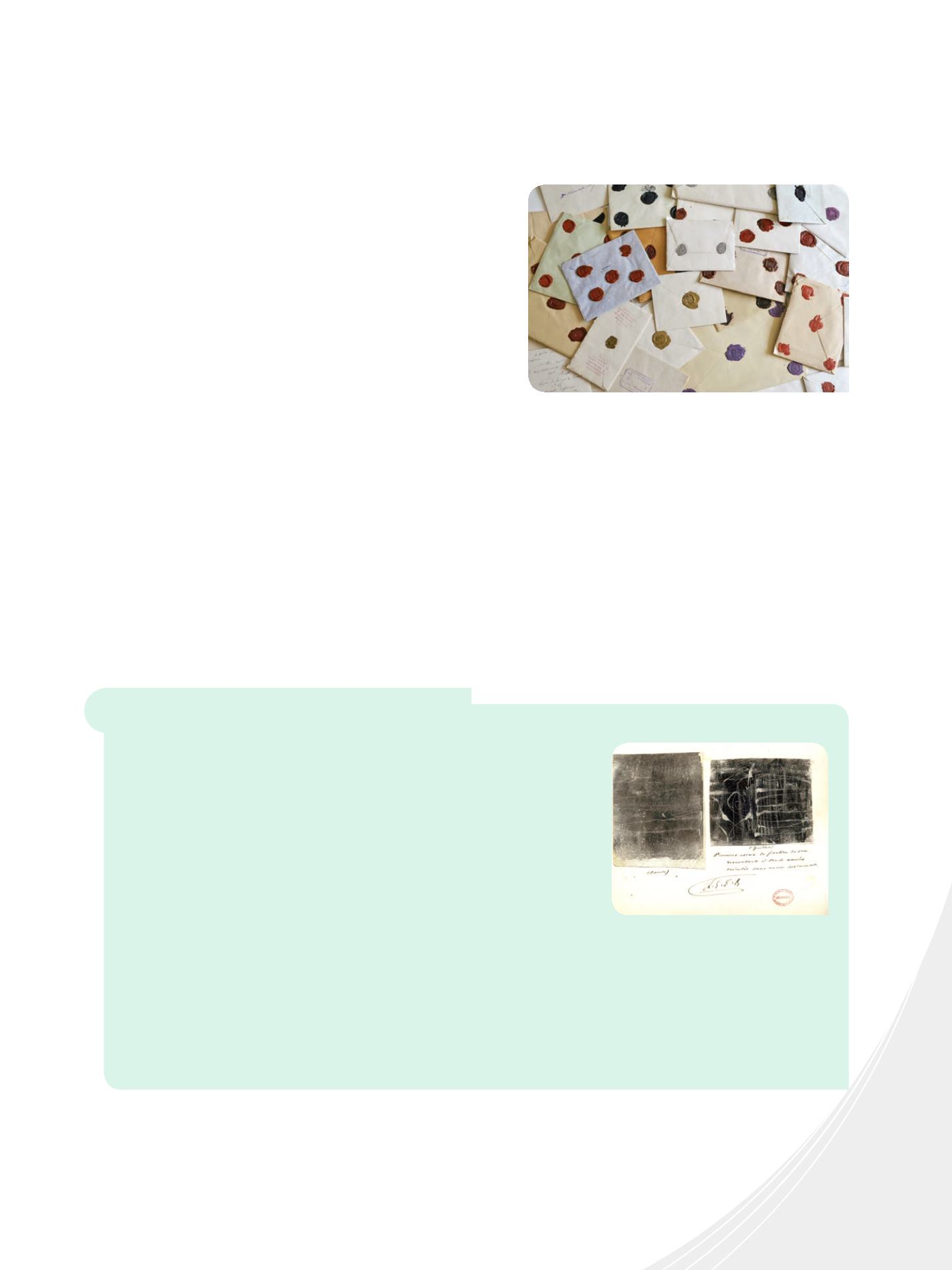

33
With the Académie des Sciences in
2013 - 2014
Au clair de la Lune
, the first audio recording in the world
On 26 January 1857, Edouard-Léon Scott de Martinville (1817-1879) sends the Académie
des Sciences a sealed envelope, with a letter entitled Principes de phonautographie [
The
Principles of Phonautography]
15
, in which he describes a device able to record sounds and
produce traces on paper coated with lamp black. A proofreader and typographer at the
printing house that edits the
Comptes rendus hebdomadaires de l’Académie des sciences
[weekly minutes of the Académie des Sciences] (CRAS), self-taught in acoustics and
physiology, Scott indeed has the ambition to “take a photography of speech”. In July 1861,
hearing that a foreign scientist was conducting research on the same subject, Scott de
Martinville asks the Académie to open his envelope: this letter, published in the CRAS, also
includes new recordings realised in 1860, including the French song
Au Clair de la Lune
,
which the Académie has been holding since then.
These recordings, though, have remained mute for nearly 150 years because, unlike Thomas Edison’s phonograph, presented
on 11 March 1878 before the Académie des Sciences, Scott’s device was not made to reproduce sound. In 2008, American
researchers were able to reconstitute the sounds recorded by Scott de Martinville; they filed an application, in association with the
Académie des Sciences and the Institut National de la Propriété Intellectuelle [the French National Institute of Industrial Property]
for these first audio recordings to be included in the UNESCO
Memory of the World Register.
Inscription automatique des sons de l’air au moyen d’une oreille artificielle [The Automatic Inscription of Sounds from Air through an
Artificial Ear]. Scott de Martinville, CRAS, volume 53, July-December 1861, pp. 108-111.
Plis cachetés [Sealed envelopes]: ascertaining the dates of the discoveries
The
Standing Commission for Sealed Deposits
(
Commission des plis
cachetés
) of the Académie des Sciences was created in 1976 at the
impulse of its Secrétaire perpétuel Paul Germain to unseal the envelopes
deposited at the Académie and being held there for more than 100 years.
The first sealed envelope held at the Académie dates back to 1735,
although minute books indicate an envelope would have been deposited
on 13 April 1697 by Marquis de L’Hospital. On 1 February 2014, the
Académie registered 18,090 sealed envelopes as deposited. As
stipulated in the Rules and Regulations of 6 July 2004, sealed envelopes
“are meant to ascertain the precise dates of the discoveries they are
supposed to contain, without requiring any publication”. The
Commission
for Sealed Deposits
, chaired by Edgardo Carosella, meets to:
• study the sealed envelopes and enclosed letters that are older than 100 years and see which scientific personalities they may
be sent to for review (minutes of the 11 July 1977 session);
• open and study the sealed envelopes and enclosed letters that are less than 100 years, at the request of their right holders;
• open and study the contemporary sealed envelopes and enclosed letters at the request of their authors within two years of
deposit.
The Commission has unsealed 447 envelopes in 2013-2014: they concerned the 1905-1908 period,with contents most predominantly
pertaining to physics, chemistry, techniques and mathematics; 26 such letters have been sent to experts or institutions for advice and
information. 57 contemporary envelopes have been deposited in 2013-2014 and 9 opened during the same period.
In order to make research in the history of science easier, the Académie should set a database describing the intellectual content of
the envelopes unsealed at the meetings.
© Adenise Lopes
© Archives de l'Académie des sciences



















